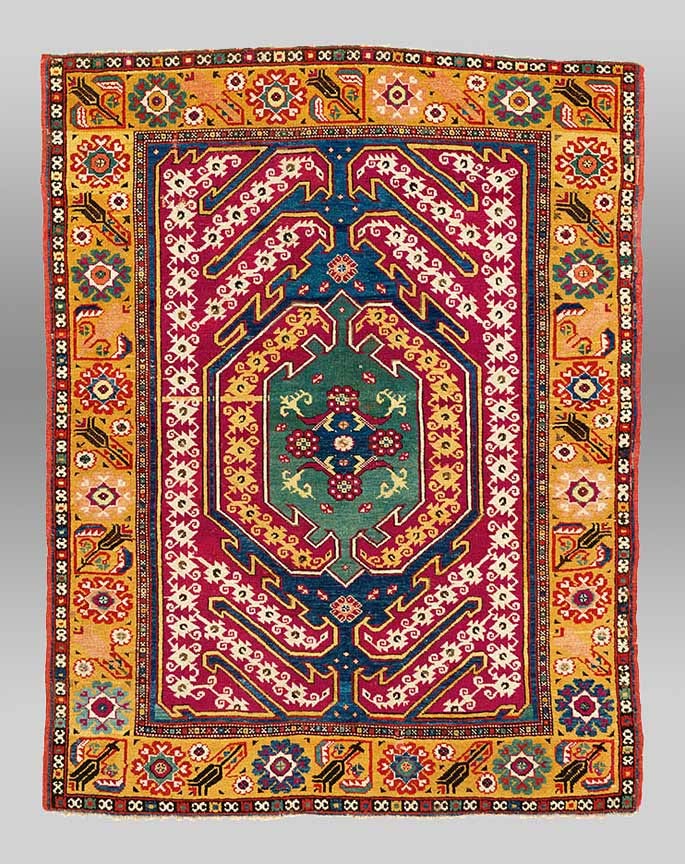Village and Commercial Rugs from Turkey
Village Rug
Turkey, 18th or 19th Century
Wool pile, 132 x 170.2 cm (52 x 67 in.)
Dr. Theodore Mast
The bright, clear colors and the essentially rectilinear design of this rug are typical features of village weaving. The central motif on the green ground and the stylized tulip motifs of the main border can be traced to designs produced at the Ottoman court in the late 16th and 17th centuries; the design of the main field, however, is unlikely to be derived from that source. Its date of production also is uncertain, although the crimson color of the main field is most likely an insect dye, either lac imported from India, or cochineal from the New World. Cochineal became readily available in Turkey after it was successfully cultivated in the Canary Islands in the 1820s, the earliest likely date for this rug.

